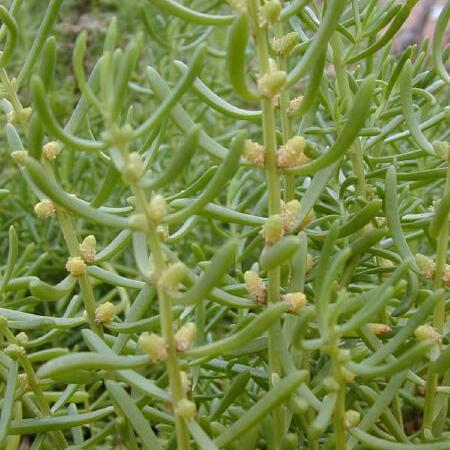Dioecious or monoecious small shrubs with thick woody roots. Leaves simple, opposite, sessile, fleshy, with a distinctly saccate, colourless base. Stipules minute. Flowers unisexual, either solitary and terminal or axillary, or in small axillary spikes. ♂ Flowers subtended by bracts, enclosed in a membranous spathella which opens with one or two transverse or radial slits giving rise to 2-4 lobes. Tepals 4, valvate. Stamens 4, alternitepalous; anthers dorsifixed, introrse, dehiscing lengthwise with 2 slits. Sometimes an abortive gynaecium present. ♀ Flowers merely consisting of a naked ovary, in the axil of leaves when solitary, in the axil of cordate bracts when growing in spikes, 2-carpellate, 4-celled by one true and one false septum; ovules 1 in each cell, basal, anatropous, with a long funicle. Stigmas 2, sessile, distinctly papillate. Fruit a septicidal berry dehiscing with 2 valves, either solitary or many united together with the bracts into a connate, spikelike whole. Seeds with a large, straight embryo, exalbuminous.
Plants relatively low, sprawling. Leaf blades obovoid to oblanceoloid. Spikes subsessile, ellipsoid, subglobose, or turbinate [lax, bracteate, flowers solitary]. Flowers anemophilous; filaments slender, or sometimes winged; anthers versatile, dorsifixed; stigmas sessile, papillate. Syncarps each with 1-4 seeds (pyrenes). Seeds narrow, flattened; coats thin. x = 11.

